Christmas 2006 - Nochebuena
Monday, December 25, 2006
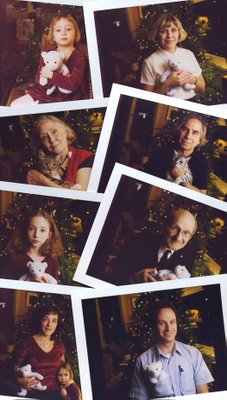 Since I can remember we have celebrated Nochebuena or Christmas Eve. This is the second year that we have invited someone for dinner who is not part of the family. Abraham Rogatnick was that guest and it delighted Rebecca to have him at the table. In years past Christmas Eve fun has been dampened by my insistance in taking the Christmas group photo. It is difficult, and more so, when we must include Rosemary's cat Toby and my female Plata. Having each person sit for a Polaroid has made it easier. We used the theme of Lauren's teddy bear. Rebecca was practicing her piano when Abraham arrived. We were amazed at listening to him singing Beethoven's Ode to Joy in German while Rebecca accompanied. Our menu (Abraham's, 84, only condition is that there were to be no onions) was as follows: 1. Adalyn Lindley's Chicken a la Barbara (Lauren refused to eat this last time so we told her it was paprika chicken and she ate it with gusto) 2. Steamed rice, snowpeas & carrots. 3. Grilled red peppers. 4. Lettuce and tomato salad. 5. Dessert was a pavlova Rosemary made. We had fruit available but everybody indulged in slathering Argentine San Ignacio dulce de leche on it. Hilary made her famous cookies, we had fudge, Spanish marzipans from Alicante and Filipino polvorones (shortbread). We drank an Argentine torrontés white wine, and an Argentine Doña Paula Cabernet Sauvignon. The kids had blended pineapple (with ice, sugar, water and orange juice).  All in all it was a pleasant evening in which Rosemary and I anticipated that best day of the year, Christmas Day, when we do nothing except, perhaps, read in bed. Merry Christmas to all who may read this. Feliz navidad. Maligayan Pasko.
Corey Cerovsek Now (Dec 23) & Then (1987)
Sunday, December 24, 2006
"Thy glass will show thee how thy beauties wear, thy dial how thy precious minutes waste" Sonnet 77, William Shakespeare  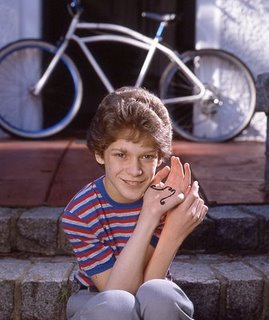 Sometime around 1985 I saw a series of photographs at the Presentation House in North Vancouver. They were photographs of four sisters taken in a beach in Massachusets by photographer Nicholas Nixon. The photos had the four women (one is Nixon's wife) always in the same order. I was drawn to these photographs and I stared at them for a long time. 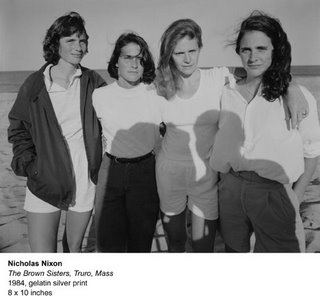 In 1954 my mother took me to see The Living Desert, a Walt Disney documentary directed by James Algar that won the first Oscar ever for a documentary film (1953). The film was about the flora and fauna of the deserts of the American South West. It featured (it was a state of the art novelty in 1954) time lapse cinematography so that desert blooms opened before your eyes. Time seemed to pass by quickly. We are far more practical in modern times. Why wash your jeans 50 times before wearing them? You can buy aged, stone washed, faded jeans with "the look" of your favourite pair. Buying antiques can be tough as the antique might just be one of those instant antiques. The effect of time on the human face can be a shock if you haven't seen a long lost friend for a while and if Botox or corrective surgery have not had some play. Without being too aware we ourselves can be a shock to others as we remember ourselves as being young. But there are pleasures to be had in documenting the face over time. I might just be around to photograph Rebecca at the point when she ceases to be a child and becomes a woman. Will I know?  I understand Nicholas Nixon's 35 year-and-counting obsession with the Four Sisters. Besides doing this with my own family I have photographed Vancouver architect Arthur Erickson for 25 years. But he was full grown the first time I photographed him. In the case of violinist Corey Cerovsek I started when he was 14 (above, right). Yesterday's morning session in my studio was our fourth. And we always use a marking pen to draw a violin's f-hole on his palm. We drew generic f-holes. This time Corey brought his "Milanollo" Stradivarius, of 1728, as reference. I dared not touch it as the instrument was played, among others, by Christian Ferras, Giovanni Battista Viotti, and Nicolò Paganini. Cerovsek mentioned that his petit amie said that our former artsy effort (above) was too much of a Hitler pose. I was careful not to repeat it. This time around I decided to make Cerovsek a bit older by using a green filter and dramatic lighting. After seeing his simultaneous performance as soloist and leader/director in Friday night's concert of baroque music at the Chan I thought that the "older" look would be interesting. 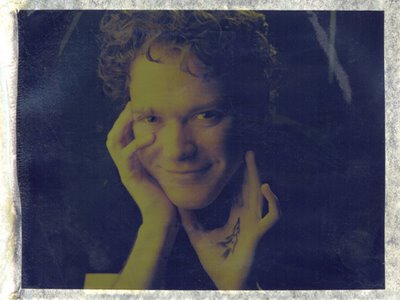 Cerovsek says that our next assignment might be in a couple of years or more. I felt sad that it won't be soon but I did manage to get a more playful photograph where we substituted the f-hole with something more seasonal. Corey Cerovsek Corey Cerovsek One More Time
Jann Of The Ardent Hart
Saturday, December 23, 2006
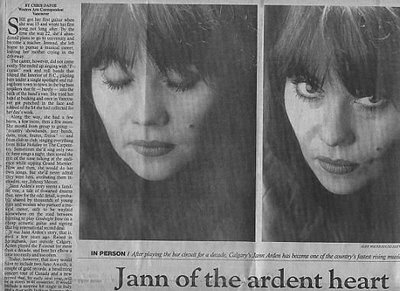 In the beginning of November 1991 The Globe & Mail's Vancouver arts correspondent and I went to the A&M office to interview Jann Arden. The piece you see here ran Saturday November 19th. I was elated that the Globe went for my idea of running two pictures. I have been re-filing and looking inside all my files. Sometimes those improperly (or quickly) fixed resin coated Ilford photographic papers deteriorate with time. One of my photos of Jann Arden did just that. I decided to send the picture to Chris Dafoe who is now an articling lawyer. This was his reply: Alex, Thanks for that. I remember interviewing Arden at A&M's office and thinking that she had a great story, starting with the drunken busking in gastown and closing with a sort of redemption. The deterioration of the picture makes for an interesting editorial comment. 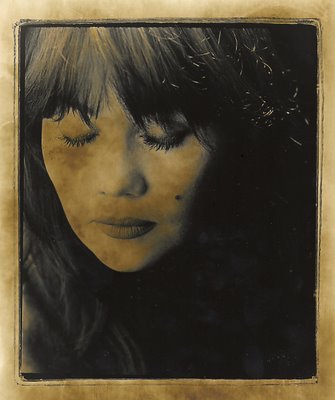 Arden has never been shy about revealing her flaws --she was very forthcoming about the lost years when I spoke to her and, over the years, she's proved to be that rare beast, a self-deprecating pop star -- and, in an odd way, the discolouration brings out that aspect of her character without disturbing the serenity you captured in the original. Hope your Christmas is a happy one. Cheers Chris
Hurrell's Johnny Weissmuller - John Boorman & Peter Breck
Friday, December 22, 2006
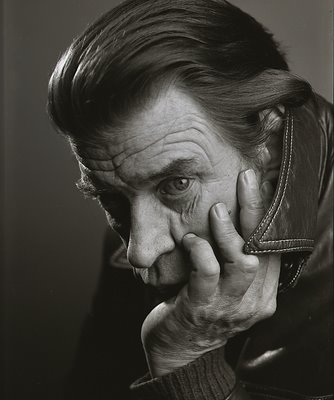 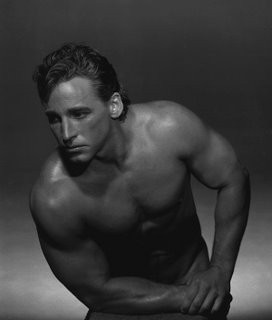 Rebecca was hanging from the bannister a couple of years ago. She was imitating an ape. I grabbed her hand and told her, "Let's go and get a movie at Videomatica." We rented the 1932 Tarzan the Ape Man with Johnny Weissmuller and Maureen O'Sullivan and saw it as soon as we got home. I then showed her a George Hurrell portrait of Johnny Weismuller (below). 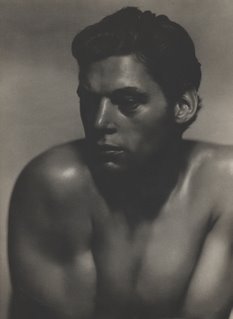 In December of 1991 I waited for Duthie Books'after Christmas sale to buy one of the most expensive books I have ever bought. The asking price for Hurrell Hollywood - George Hurrell - Photographs 1928-1990 was $90. The 20% off discount made it more bearable. I bought two copies. One for me and one for art director Chris Dahl. I had been shooting in the Hurrell style since 1985 now and perhaps with the book Dahl might just allow me to keep at it for a while longer. Hurrell's photography made stars of actors and actresses who would have perhaps never made it. The most famous example was Norma Shearer. Hurrell made her shine and look far more glamourous than she was. Some photographers, particularly the purists (and I have been one in my past), argue that we live in a one star planetary system so photographs should mimic the sun and a shadow in one direction is enough. Purists would abhor all those wonderful films noir with the projected venetian blinds, low angles and multiple and ominous shadows. Before the advent of Photoshop and the air brush, Hurrell's very large negatives were retouched by massive removal (as in scraping) of actor's skins (on the negative) and with red pens a gentle glowing skin replaced what was banished. A famous Hurrell portrait of Gary Cooper shows Cooper with a cigarette in mouth and his skin glows like Photoshop Diffuse Glow used by modern glamour photographers and on magazine covers to eliminate "annoying" skin pores. It is that Weissmuller photograph by Hurrell that has always caught my eye. It is dark and you cannot really see his eyes. Rebecca often asks me to look at the picture in my Hurrell book. I am excited when Rebecca does different things from what I expect but I am also pleased when we seem to coincide in what we like. After staring at the picture she goes to the bannister and hangs and swings while bellowing out a pretty credible Weismuller/Tarzan yell. While my 1985 portrait of Vancouver body builder Mike Hamill (top right) is not a Hurrell you might just see a passing resemblance. By 1987 I felt a bit stifled in my imitation of Hurrell and decided to go my own way. One of the results is this odd portrait of British film director John Boorman where I literally brought my studio lights to Boorman's room at the Vancouver Hotel. 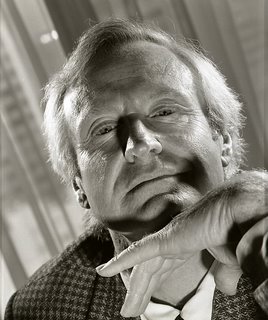 It has all kinds of mistakes like the low angle (I have removed his nose hairs with Photoshop) and the light spills on his nose. I like it nonetheless. By 1989, when I photographed Vancouver actor Peter Breck (top, left, he played Doc Holliday in the series Maverick) I had eliminated one of the three lights and started using a 3x4 ft softbox really close. This is now the style I am most comfortable with. I am able to worry less about light placement and I can concentrate on communication with my subject. I can say that Peter Breck was just about the easiest subject I ever had to photograph. I warned him that with my deep green filter I was going to make him look like a vampire. "Do it. I don't give a damn. Do your job," he told me. I think I am going to rent some of his movies and show Rebecca. Will she want a toy 45?
Peter Breck One More Time
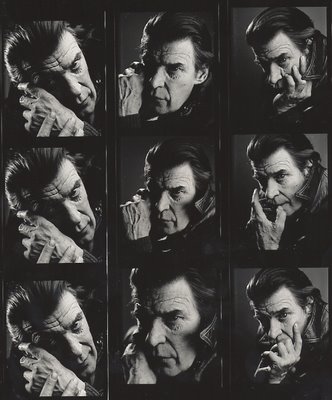
A Siberian Husky, Santa Claus & The Piggly Wiggly
Thursday, December 21, 2006
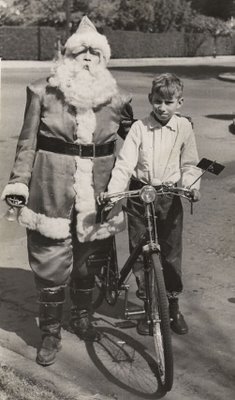
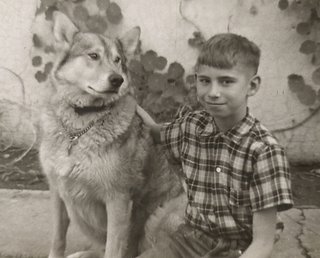
At age 64 I find it very hard to identify myself as a Canadian, a Mexican or an Argentine. I become that more confused at Christmas time. The fact is that I have now lived more in Canada than in Mexico or Argentina. I lived in Austin, Texas for five years. Might I be an early product of globalization as I feel very American? It may have had to do with our decidedly American Christmases.
While in Buenos Aires my family celebrated Christmas when most of Buenos Aires' kids (then) put out their shoes on the eve of the Epiphany (January 6). We called it Los Tres Reyes. None of my friends understood who "my" Santa Claus was. I could not (then) have explained that Santa came to my house via Manila. My mother had been born there and the Philippines, as an American protectorate, celebrated a snowy Christmas in the tropics. It was equally startling to see our Christmas tree in our BA house. It was usually 38 degrees celsius outside.
My first Mexico City Christmas in 1953 was equally strange. My grandmother was a diplomat who worked at the Philippine Embassy. She told us that as a diplomat she had to live in a nice home. So she, my mother and I lived (with Rusty, Siberian Husky) in a grand old house on Sierra Madre Street in the very fashionable Las Lomas de Chapultepec district ( colonia). That Christmas my grandmother had given me a brand new Raleigh bicycle so my guess is that the Santa Claus in this picture taken very near my house on Explanada Boulevard happened sometime before the new year.
My Aunt Dolly (my mother's younger sister) lived in Mexico City. Her husband, Bill Humphrey was an American geologist who drove a candy red Buick Century. That car and our Siberian Husky were one of a kind in Mexico City. An outgoing American geologist has given us his dog. Rusty had the habit of escaping and going after other dogs, cats, chickens that he could find in the neighbourhood. My mother, often had to pay for dead chickens that were shown as evidence that Rusty had gone on a prowl. Our Mexican neighbours feared Rusty as he never barked but would howl on full moons or to greet us when we came home.
In school I was laughed at because of my Argentine Spanish so I quickly learned to speak like a Mexican. By then the memory of that illustration in the Argentine Billiken (a children's magazine) that showed the Bishop St Nicolas of Bari as being the real Santa Claus was no longer my proof for his existence.
I grew up (or so I thought) by the end of that year. I would cycle to the nearby American shopping district where at a bookstore I discovered Tom Corbett, Space Cadet and the Hardy Boys . There was also a Piggly Wiggly store that catered to the Americans of Las Lomas. That's were I found my first box of Kellogg's Frosted Flakes. I must have become an American then.
It was also about then that my grandmother thought I was old enough to hear her story. She told me how she had left Manila in 1920, a penniless widow, with her three children, to live in the Bronx. She told me they had disembarked from a Japanese ship in a magical place that had enormous conifers, that was called Vancouver. She told me they had walked into a cavernous train station (the CP Station at the foot of Seymour Street) to take a train that took them to New York City.
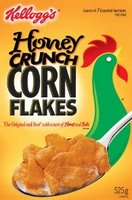
I did not know then that someday I was going to share with a Canadian wife a fondness for Kellogg's Honey Crunch Corn Flakes.
Bach and Bing At The Chan
Wednesday, December 20, 2006
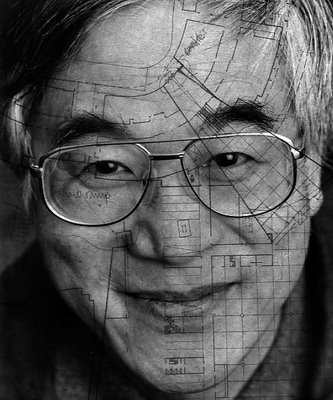
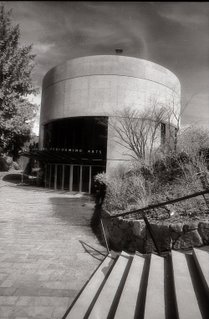
Abraham Rogatnick (a Harvard architect) Graham Walker (designer and responsible for the sineage at the Chan Centre for the Performing Arts at UBC) and I went to an Early Music Vancouver concert, The Bach Cantata Projects: Festive Cantatas for Christmas. The musicians were my very favourite Pacific Baroque Orchestra plus guests including the scrumptious Australian violinist LucindaMoon. The featured solo vocalists were Tyler Duncan, baritone, Colin Balzer, tenor, Laura Pudwell, alto and Suzie LeBlanc soprano.
Not known by many is that the cheapest seats in this cavernous house are to be had at the front five rows. For this concert our third row CC seats were perfect. We could see and hear the singers as well as that huge instrument with such a gentle sound, Ray Nurse's theorbo. Also from our vantage point (audience, right) we could hear the continuo section including Christina Mahler's stupendous sounding cello and violoncello piccolo.
Unfortunately from where we were sitting I also had a clear view of Lucinda Moon sitting, front row, as concertmaster (Marc Destrubé was the musical director). I was undecided if I should concentrate on Moon's eyes or that mouth of hers. While some would think that an Australian accent would spoil the sensuous mouth I would beg to differ. For my sanity I decided to concentrate on other things; to be precise, on one man, Bing Thom.
Bing Thom is the architect whose design became the Chan Centre. In my past I have photographed this cheerful man many times and I have come to admire his intelligence on so many things.
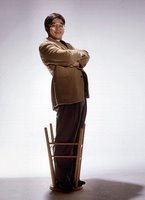
My friend, urban affairs writer, Sean Rossiter and I both agree that Bing Thom should be drafted (American style) and made city mayor. I think ex city councilor Gordon Price would agree.
In one of my conversations with Thom he told me he taught (when under his wing) architect Arthur Erickson how to meditate. Thom's views on how to make our city a liveable city seem to coincide with both Arthur Erickson's and Gordon Price's.
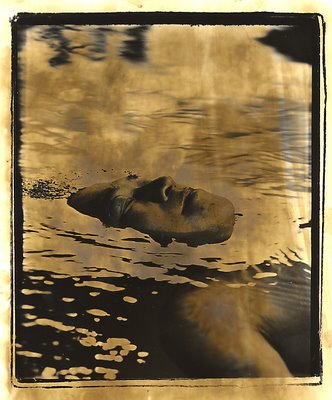
While Bing Thom is very alive and well I am including here a photograph (he calls it his Mao swimming in the Yangtze) I took of Thom on his back in the pool of one of the houses he built in Vancouver's Southlands district. The colours are all because the photographic paper was improperly fixed. Going into my files enables me to find such hidden and accidental treasures.
During the intermission Abraham likes to mingle with the crowds to talk to all his friends and his many ex-students from his UBC School of Architecture days. Graham and I quickly returned to our seats. The crowds were too big. I told Abraham, when he returned, that Bing Thom had failed in his design of the lobby. It simply is too narrow. Abraham was adamant in his disagreement saying that the solution was an easy one. Lineups to the bar should be parallel to the bar. That would solve everything.
The Chan might be new in comparison to my beloved St James'Anglican but it already has ghosts of what will soon be a Christmas past. !That downunder violinist!
A Dog, A Turtle & Robert E. Lee's Horse
Tuesday, December 19, 2006
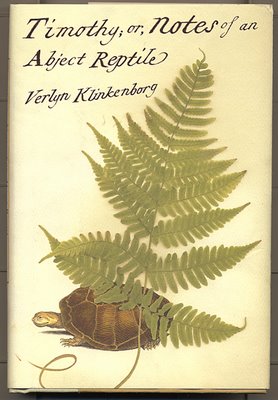 One night when I had tasted bitterness I went on to the hill. Dark heather checked my feet. Below marched the suburban street lamps. Windows, their curtains drawn, were shut eyes, inwardly watching the lives of dreams. Beyond the sea’s level darkness a lighthouse pulsed. Overhead obscurity……I sat down on the heather. Overhead obscurity was now in full retreat. In its rear the freed population of the sky sprang out of hiding, star by star. One night when I had tasted bitterness I went on to the hill. Dark heather checked my feet. Below marched the suburban street lamps. Windows, their curtains drawn, were shut eyes, inwardly watching the lives of dreams. Beyond the sea’s level darkness a lighthouse pulsed. Overhead obscurity……I sat down on the heather. Overhead obscurity was now in full retreat. In its rear the freed population of the sky sprang out of hiding, star by star.
On every side the shadowy hills or the guessed, featureless sea extended beyond sight. But the hawk-flight of imagination followed them as they curved downward below the horizon. I perceived that I was on a little round grain of rock and metal, filmed with water and with air, whirling in sunlight and darkness. And on the skin of the little grain all the swarms of men, generation by generation, had lived in labour and blindness, with intermittent joy and intermittent lucidity of spirit. And all their history, with its folk-wanderings, its empires, its philosophies, its proud sciences, its social revolution, its increasing hunger for community, was but a flicker in one day of the lives of stars.
Star Maker, Olaf Stapledon 1937.
When I read that in Buenos Aires in 1965, in its first translation into Spanish, Hacedor de Estrellas. with its now famous Jorge Luís Borges prologue, I too soared into the sky and into the extreme limits of the galaxies with the unnamed narrator. The narrator, un-aided by LSD or any other trip-inducing drug went on a voyage that I think has no match in literature. Perhaps by going to the stars, English writer Stapledon could discover something about our humanity. I think he did better with his 1945 novel Sirius. Sirius is a great experiment, a dog “created” by Thomas Trelone which (who?) has the brain of a human. Serius is raised with the family’s daughter, Plaxy. In one of the most memorable parts of the book, this dog with its superior ear for music suffers while Plaxy tortures Bach on the piano. If only Sirius could have human hands to play!
It was there that I caught on that the best way to discover ourselves was by seeking a point outside our body. That point of view, as Stapledon so well demonstrated, could be literary.
Around 1974 it all fell into place when I attended a lecture by Spanish born anthropologist Santiago Genovés Tarazaga at the University of Mexico. He had been on board Thor Hyerdahl’s Ra I and Ra II expeditions. He had been the leader (the only man with a crew of women) in a raft from Africa to America, in the Acali expedition of 1973. Genovés was illustrating the point on the difficulty that historians have in being objective. I became most alert when he said,
“We must not forget that objectivity is a subjective invention of man.”
I have been a sucker since for books like Sirius. Richard Adams is well known for his rabbit family, novel Watership Down . Far better for me, is his 1988 Traveller. The two lld Traveller happens to be Robert E. Lee’s 8-year-old horse, who in the stables of Washington College, Lexigton, Virginia, reminisces with Tom, a domestic cat who is his friend. If there ever was an account of the follies of war and of men this book is it. I read it once a year.
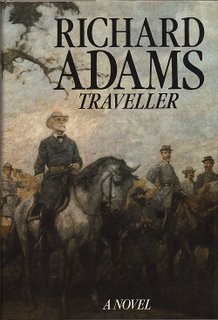
I have a new book to add to my list. I have just finished a delightful little novel, Timothy; or, Notes of an Abject Reptile by Verlyn Klinkenborg, Borzoi 2006. Timothy is a 40 year-old turtle who tells us of life in the 18th century village of Selborne, famous for its naturalist Gilbert White, a pastor who happens to be Timothy’s master. Timothy somehow records, in his own way, Gilbert White’s observations on the plants, birds and animals of this parish in Hampshire. We get some extra goods. As in Stapeldon’s Sirius we find out a bit about ourselves through the incisive observations of a turtle whose first love was a delightfully named Mrs Rebecca Snook. All the descriptions are in correct English with the lilt of a creature who has only two positions in life: 1. Feet on the ground. 2. Feet in the shell. Timothy’s explanation on his fatalistic loneliness:
The sufferings of my solitude Mr. Gilbert White plainly feels. My hermit-like condition. But it is a mammal’s condition of solitude. I was laid in solitude, hatched in solitude, all but conceived in solitude. " One of the first dictates of nature," Mr. Gilbert White notes of maternal affection. But it is only as strong as the helplessness of the newborn. Humans at one extreme. Tortoises on the other.
|





























